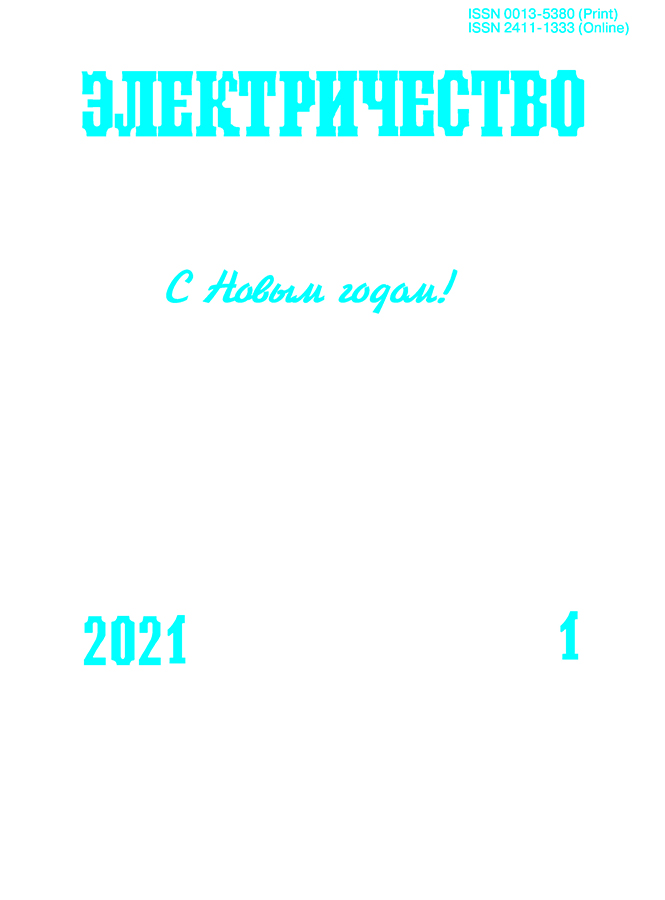Driving Forces and Lines of the Evolution of Rotating Electrical Machines. Part 1
DOI:
https://doi.org/10.24160/0013-5380-2021-1-44-54Keywords:
rotating electrical machines (EMs), evolution driving forces and limitations, EM development history, evolution lines, EM supersystems and subsystems, materialsAbstract
The advent and development of such class of technical systems as electrical machines is only one element of those composing the technical progress, which, in turn, is one of elements composing the human civilization. Technical progress can be imaged as an entanglement of many «streams», each containing the development, putting in use, operation, and disappearance of a technical system. Technical progress is advanced through practical implementation of a multitude and variety of improvements. Any technical system is developed through embodying various ideas, which results in a change of a given system or development of a new system. An attempt is made to briefly describe all significant elements in the evolution of electrical machines (EMs). The role of large inventions and moderate improvements is shown; examples of evolution trends, patterns and lines are given; the evolution of EMs in the «supersystem-system-subsystem coordinate axes is described, and it is shown how applications determine the requirements for EMs. Examples of the evolution of the materials used in EMs are considered. The role of individuals, teams, and organizations is discussed. Particular examples of evolution lines are given, and the counterforces and limitations are described.
References
1. Yan der Kooij B.J.G. The Invention of the Electromotuve Engine, 2015, ISBN: 1503095878.
2. Sahal D. Patterns of Technological innovation, Addison-Wesley, 1981, 381 p.
3. Орлов М.А. Основы классической ТРИЗ, изд. 2-е, испр. и доп. М.: Солон-Пресс, 2006, 432 с.
4. Zlotin B., Zusman A. Patterns of Evolution: recent findings on structure and origin, TRIZC0N’2006, April 2006, Milwaukee, WI, USA.
5. Dehez B., Boudart F., Perriard Y. Analysis of a new topology of flexible PCB winding for slotless BLDC machines. - 2017 IEEE International Electric Machines and Drives Conference (IEMDC), Miami, FL, 2017, pp. 1-8, dpi: 10.1109/IEMDC.2017.8002019.
6. Копылов И.П., Клоков Б.К., Морозкин В.П., Токарев Б.Ф. Проектирование электрических машин, 4-е изд. М.: Юрайт, 2018, 766 с.
7. Петров В.М. Технология инноваций, ISBN 965-7127-01-7, Тель-Авив, 2007, 90 с.
8. Kolar J.W., Drofenik U., Biela J., Heldwein M.L., Ertl H, Friedli T., Round S.D. PWM converter power density barriers. — IEEJ Transactions on Industry Applications, May 2007, 128 (4), pp. 9—29.
9. Takamiya T., Hanazawa K., Suzuki T. Recent development of grain-oriented electrical steel in JFE Steel, JFE, Technical report, March 2016, No. 21.
10. Carbon conductors for lightweight motors and generators, DE-EE0007865, Rice University, University of Maryland, DexMat, Irvin Global Industries, April 2017 — Oct. 2019.
11. Wei Tong, Wind power generation and wind Turbine design, WIT Press, 2010, 741 p. Ch. 9 «Direct drive superconducting wind generators» by Clive Lewis
12. Shengtao Li., Shihu Yu., Yang Feng. Progreaa in and prospects for electrical insulating materials, IET Journals, High Volt., 2016, vol. 1, iss. 2, pp. 122—129, doi: 10.1049/hve. 2016.0034.
13. Вебсайт Европейского Консультативного Совета по Исследованиям в Области Аэронавтики (ACARE) [Электрон. ресурс] www.acare4europe.org (дата обращения 19.06.2020).
14. McKern B. Managing the glonal network carporation, 2003, Routledge, 304 p.
#
1. Yan der Kooij B.J.G. The Invention of the Electromotuve Engine, 2015, ISBN: 1503095878.
2. Sahal D. Patterns of Technological innovation, Addison-Wesley, 1981, 381 p.
3. Orlov M.A. Osnovy klassicheskoy TRIZb izdyu 2-ye, ispr. i dop. (Fundamentals of classical TRIZb edition 2, rev. And add. ) M.: Solon-Press, 2006, 432 p.
4. Zlotin B., Zusman A. Patterns of Evolution: recent findings on structure and origin, TRIZCON-2006, April 2006, Milwaukee, WI, USA.
5. Dehez B., Boudart F., Perriard Y. Analysis of a new topology of flexible PCB winding for slotless BLDC machines. - 2017 IEEE International Electric Machines and Drives Conference (IEMDC), Miami, FL, 2017, pp. 1-8, dpi: 10.1109/IEMDC.2017.8002019.
6. Kopylov I.P., Klokov B.K., Morozkin V.P., Tokarev B.F. Proyektirovaniye elektricheskikh mashin, 4-ye izd. (Electrical Machine Design, 4th ed.). M.: Yurayt, 2018, 766 p.
7. Petrov V.M. Tekhnologiya innovatsiy, ISBN 965-7127-01-7, Tel--Aviv (Technology Innovation, ISBN 965-7127-01-7, Tel Aviv), 2007, 90 p.
8. Kolar J.W., Drofenik U., Biela J., Heldwein M.L., Ertl H, Friedli T., Round S.D. PWM converter power density barriers. - IEEJ Transactions on Industry Applications, May 2007, 128 (4), pp. 9-29.
9. Takamiya T., Hanazawa K., Suzuki T. Recent development of grain-oriented electrical steel in JFE Steel, JFE, Technical report, March 2016, No. 21.
10. Carbon conductors for lightweight motors and generators, DE-EE0007865, Rice University, University of Maryland, DexMat, Irvin Global Industries, April 2017 - Oct. 2019.
11. Wei Tong, Wind power generation and wind Turbine design, WIT Press, 2010, 741 p. Ch. 9 «Direct drive superconducting wind generators» by Clive Lewis.
12. Shengtao Li., Shihu Yu., Yang Feng. Progreaa in and prospects for electrical insulating materials, IET Journals, High Volt., 2016, vol. 1, iss. 2, pp. 122-129, doi: 10.1049/hve. 2016.0034.
13. Vebsayt Yevropeyskogo Konsul-tativnogo Soveta po Issledovaniyam v Oblasti Aeronavtiki (ACARE) (Website of the European Advisory Council for Aeronautical Research (ACARE)) [Elektron. resurs] www.acare4europe.org (data obrashcheniya 19.06.2020).
14. McKern B. Managing the glonal network carporation, 2003, Routledge, 304 p.




